The United States is home to a ton of incredibly interesting history. It’s always fun to learn something new, so we’ve compiled a list of some of America’s oldest man-made structures. In order to qualify, we had a short list of criteria: the structure has to still be standing (at least partially), able to be visited by tourists, and constructed by humans. Many of these sites offer tours, museums, and walking trails.
This article includes the second half of America’s states when put in alphabetical order. These states are Montana, Nebraska, Nevada, New Hampshire, New Jersey, New Mexico, New York, North Carolina, North Dakota, Ohio, Oklahoma, Oregon, Pennsylvania, Rhode Island, South Carolina, South Dakota, Tennessee, Texas, Utah, Vermont, Virginia, Washington, West Virginia, Wisconsin, and Wyoming. In order to learn about the first half of the states, visit the sister article—also published by Faith Zodiac—with the title “Do You Know the Oldest Man-Made Structure in Your State? – Alabama to Missouri.”
Montana and Nebraska
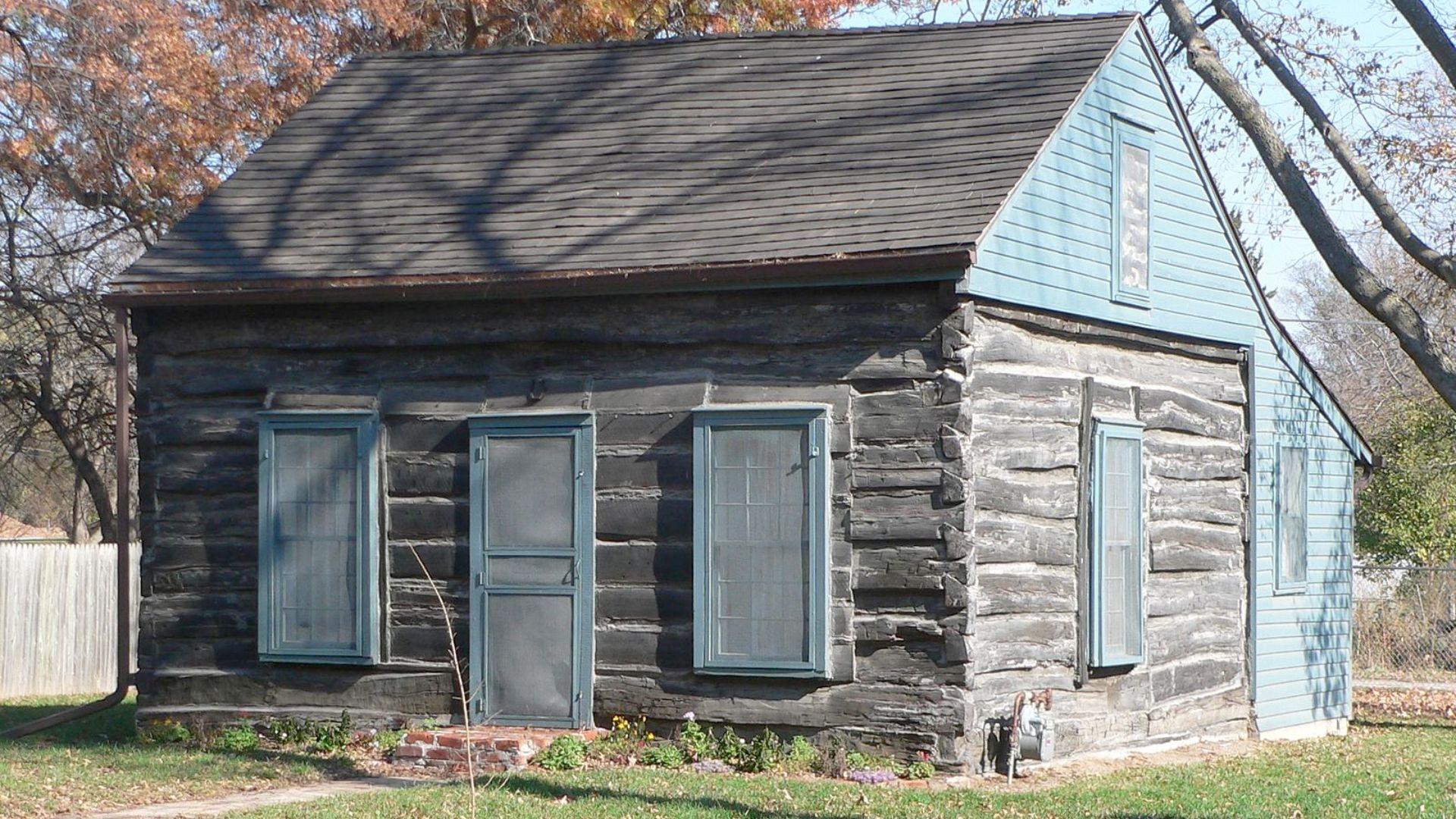
Fort Connah, Missoula, Montana
Located in the isolated prairie of Fort Connah, this modest log cabin was constructed by Scottish fur trapper Angus McDonald between 1846 and 1847. It was a component of the Hudson’s Bay Trading Post until 1871, trading fur, buffalo meat, and rawhide. Although the visitor center and museum are still under development, two additional cabins have been added to the original storehouse. One of these cabins features historical artifacts and exhibits, providing a vivid glimpse into life at Fort Connah.
Bellevue Log Cabin, Bellevue, Nebraska (Pictured)
The Bellevue Log Cabin is celebrated as Nebraska’s oldest surviving structure. Originally constructed in 1830 near the Missouri River, it was moved to a safer location in 1835 following a cholera epidemic. By 1850, the cabin was relocated once more to its current site, where it stands today. Built from cottonwood logs, the small cabin was eventually expanded to twice its original dimensions. To explore the cabin, you can arrange a tour through the Sarpy County Historical Museum and Society, or just visit the site and learn something new by reading the historic marker outside.
Nevada and New Hampshire

Old Mormon Fort, Las Vegas, Nevada (Pictured)
While the Old Mormon Fort has undergone partial reconstruction, remnants of its original structure from 1855 are still visible. This 150-square-foot (14-square-meter) outpost, established by Mormon missionaries, functioned as a rest stop for travelers. Situated in downtown Las Vegas, the site contrasts with its modern surroundings by also featuring reconstructions of an adobe building, historic wagons, and a ranch house. Visitors can experience a sense of historical immersion, with both the fort and the visitor center showcasing artifacts from the 19th-century site.
Jackson House, Portsmouth, New Hampshire
Jackson House, constructed in 1664, blends English and American architectural styles and features extensive use of wood. Over the years, it has seen several additions, including a lean-to by 1715 and a bedchamber in 1727. The house remained in the Jackson family until 1947. Today, it operates as a museum that is open from June to October. Visitors can explore the house and envision how the Jackson family once lived.
New Jersey and New Mexico
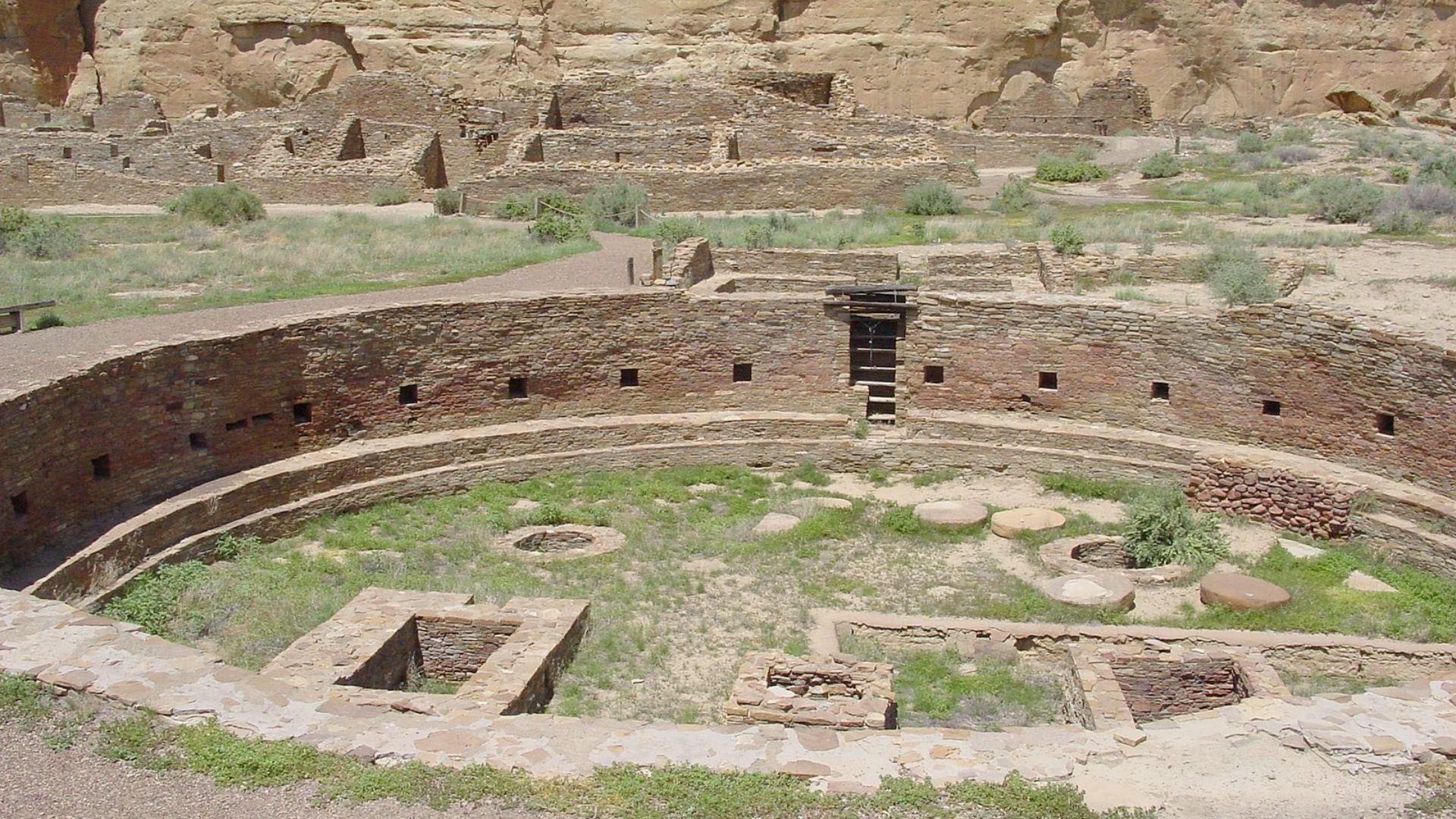
C. A. Nothnagle Log House, Gibbstown, New Jersey
The C. A. Nothnagle Log House claims to be the oldest standing log cabin in the Western Hemisphere. Constructed by Swedish or Finnish settlers using oak logs and hardwood pegs instead of nails, the oldest sections are believed to date from between 1638 and 1643. Although it is currently a private residence, the owner offers tours by appointment and maintains a Facebook page. Visitors can observe several original features, including 16th-century ironware, a brick fireplace, and even a 300-year-old shoe that was discovered beneath the floorboards.
Chaco Culture National Historical Park, New Mexico (Pictured)
New Mexico is home to a wealth of ancient sites that are open to visitors. Among them is the Taos Pueblo, constructed around 1325, which continues to serve as a residential community. The Aztec Ruins, dating from 1100, can be explored along the Trail of the Ancients Scenic Byway. Chaco Culture National Historical Park features some of the oldest structures in New Mexico, dating back to around 850 AD. Notably, Chetro Ketl, a three-acre ceremonial site or royal palace, was erected around 990 AD. From the visitor center, a nine-mile loop road provides access to five significant sites, or you can join a guided tour led by a park ranger.
New York and North Carolina
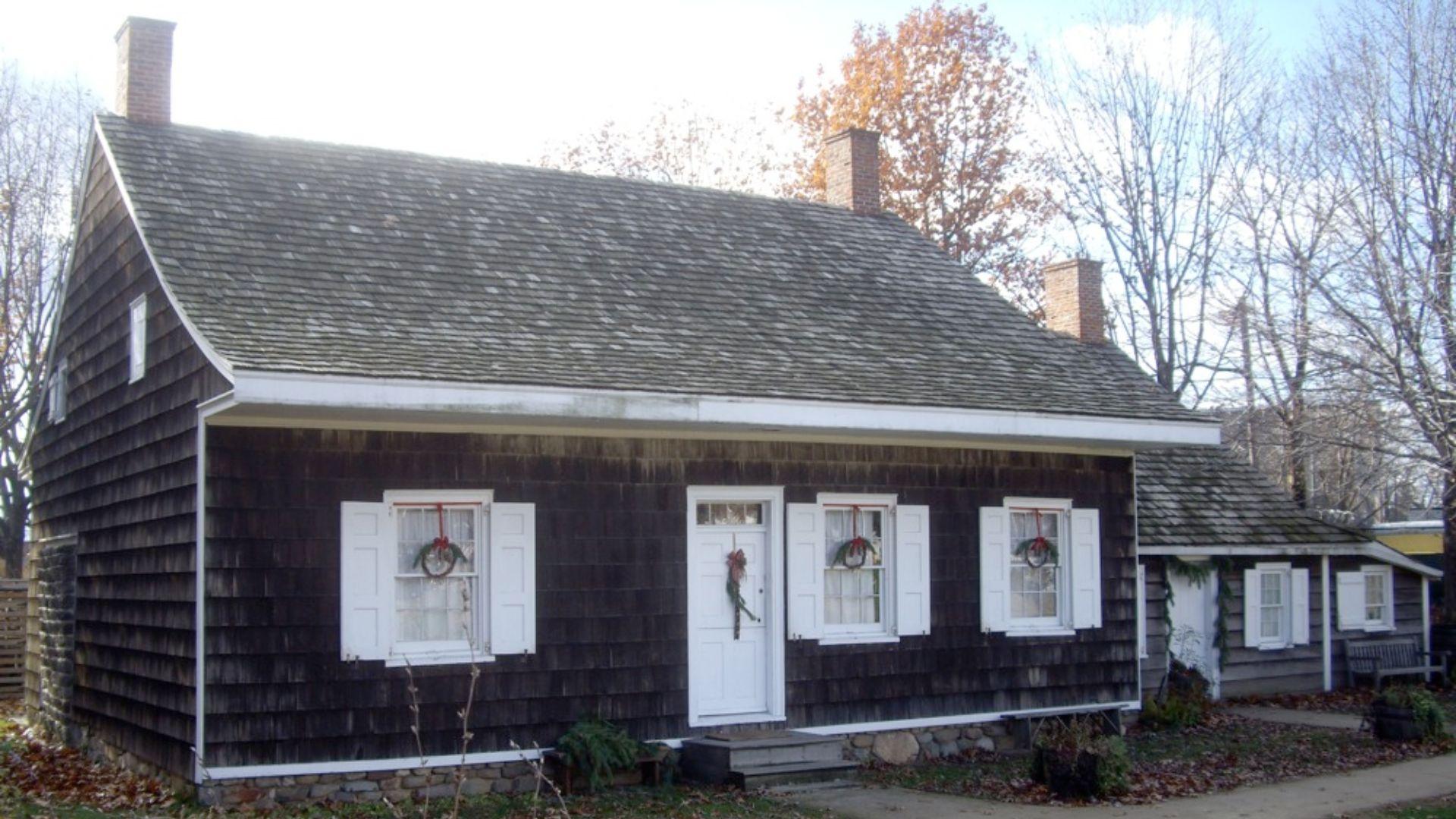
Wyckoff House, Brooklyn, New York (Pictured)
The Wyckoff House, an iconic Brooklyn landmark since 1652, features distinctive Flemish architecture, including a sharply sloped roof and traditional Dutch doors. Nearly lost to demolition in the 1950s, the house was preserved and became a museum in 2001. Although currently closed for repairs due to damage from Hurricane Ida, visitors can still enjoy a self-guided audio tour around the property.
Lane House, Edenton, North Carolina
Lane House holds the title of North Carolina’s oldest building—verified by tree ring analysis—with its construction estimated to have happened around 1719. The identity of its original owners remains unknown. This historic structure features one-and-a-half stories and originally included two rooms on the ground floor and two in the attic. Although the house is still in use, visitors can view the exterior by driving to Edenton, the first Colonial capital of North Carolina.
North Dakota and Ohio
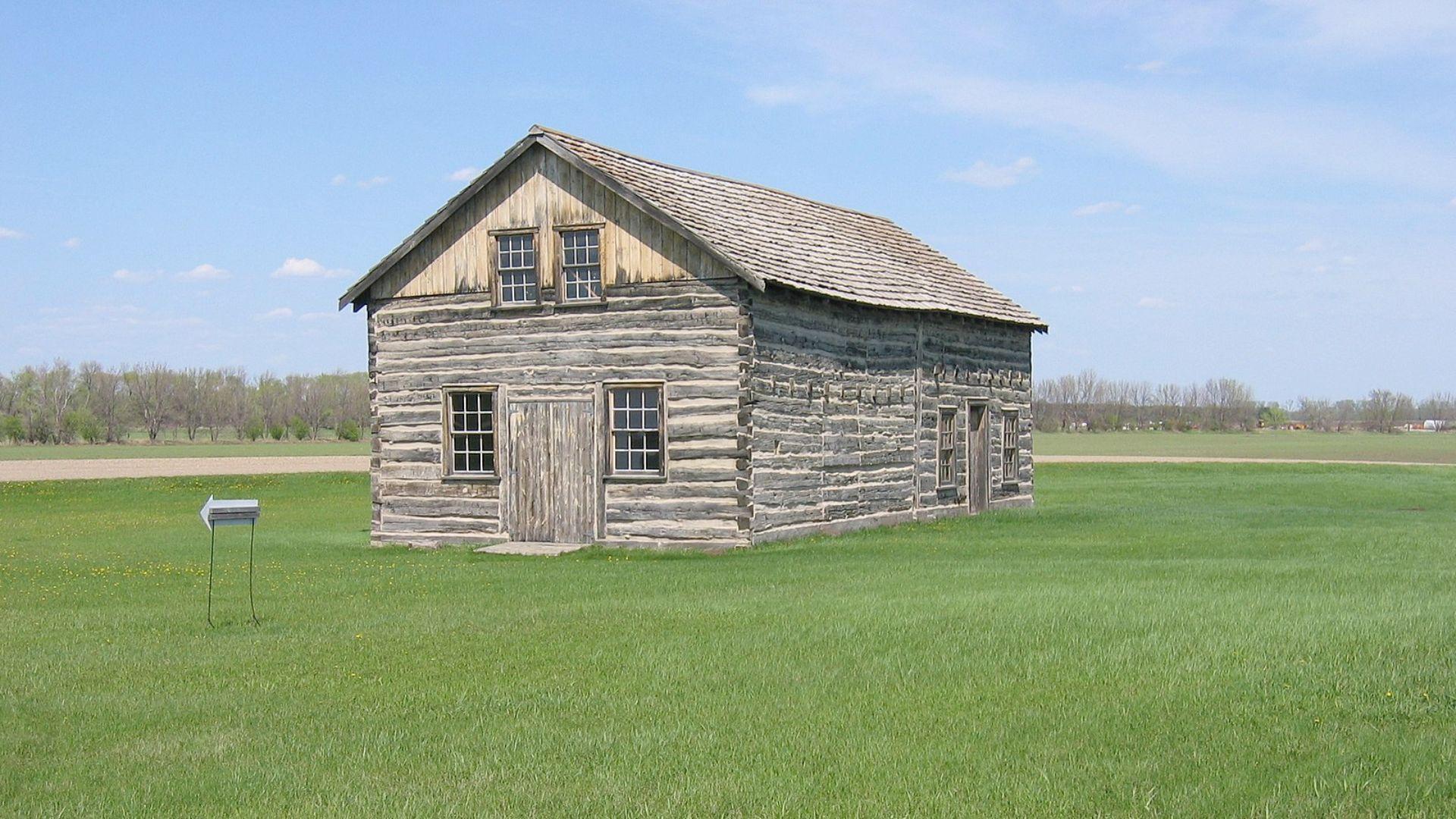
Gingras Trading Post, Walhalla, North Dakota (Pictured)
Antoine Gingras, a notable Métis (of mixed European and Native American descent) fur trader, built this oak log trading post in 1844, employing dovetailed and pegged joints. The original logs are still visible today, though they are delicate. In contrast, the second building on the property—the family residence—has been meticulously restored to its vibrant past. Visitors can enter to explore interpretative panels that provide insights into the site’s history and Métis culture.
Wolf Plains, Athens, Ohio
Ohio is home to numerous ancient Native American mounds, with the Wolf Plains in Athens showcasing six surviving examples. These mounds—constructed by the Adena culture between 800 BC and 100 AD—were once bustling centers for various activities, including sports and spiritual practices. Among other mounds in Ohio with comparable origins, the iconic Great Serpent Mound in Peebles stands out. Dating back to around 800 BC, it is recognized as the largest serpent effigy in the world.
Oklahoma and Oregon
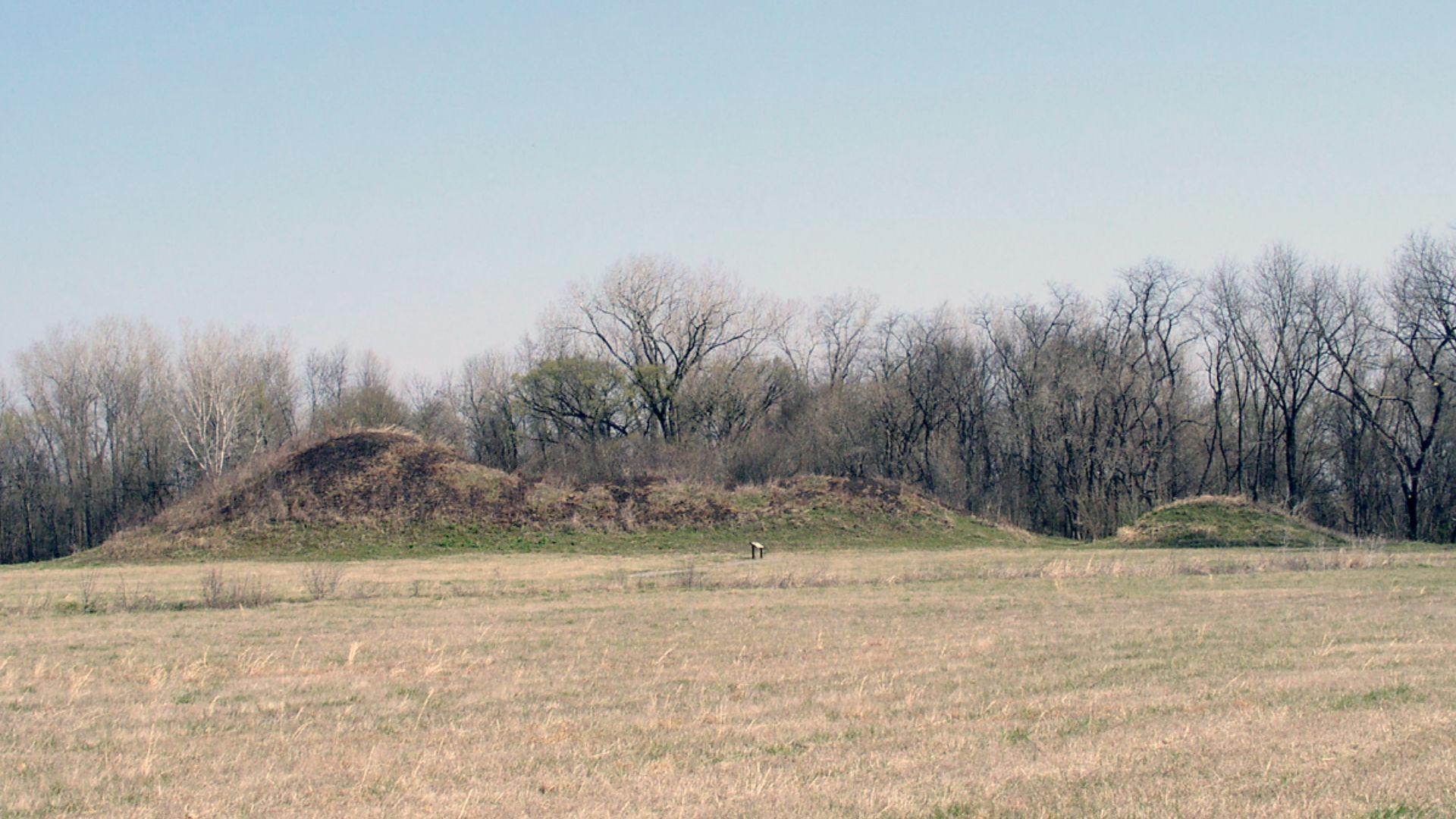
Spiro Mounds, Fort Coffee, Oklahoma (Pictured)
The Spiro Mounds archaeological site, which covers 80 acres, features one burial mound, two temple mounds, and nine house mounds. This site was a significant cultural and religious hub for the Caddoan Mississippian people, ancestors of today’s Caddo Nation of Oklahoma. Constructed and used between 850 and 1450, the site is renowned for its particularly interesting burial mound, which has provided thousands of artifacts despite suffering extensive damage in the 1930s. Listed on the National Register of Historic Places in 1969, Spiro Mounds is currently the only prehistoric Native American archaeological site in Oklahoma open to the public.
Molalla Log House, Oregon
Discovered in 1984 and lacking any historical written records, the origins and purpose of the Molalla Log House remain uncertain. Although it was relocated from an unknown site in 1892, it has recently been moved once more to a location that may better resemble its original setting. Tree ring analysis reveals that the false hemlock logs used in its construction were cut in 1799, leading to theories that it may have been built by Canadian fur traders. Once its restoration is complete, the small log house will be available for scheduled tours.
Pennsylvania and Rhode Island
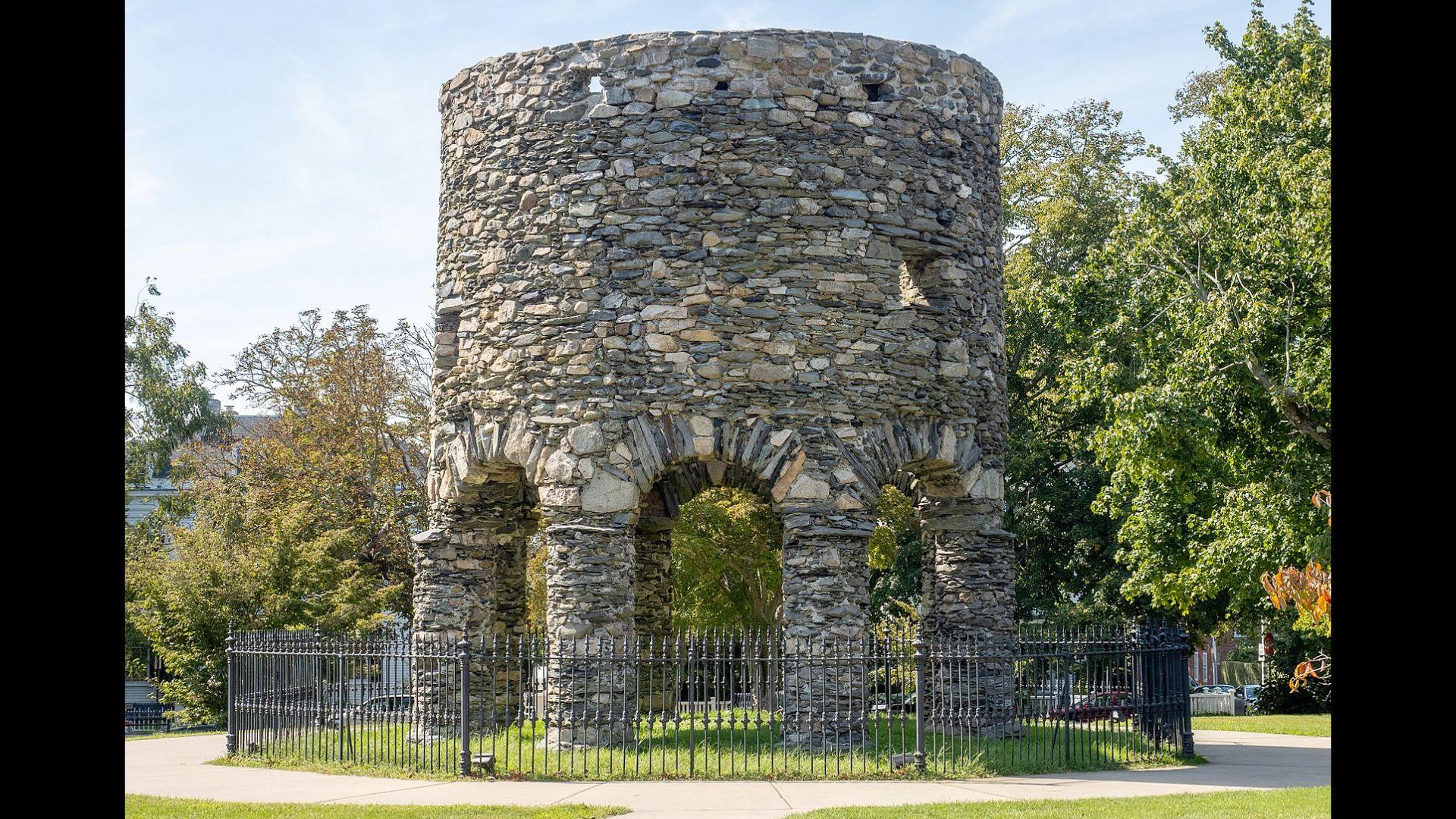
Lower Swedish Cabin, Upper Darby, Pennsylvania
A visit to the Lower Swedish Cabin in Drexel Hill might make you feel like you’ve been transported to the 17th century. This cabin closely resembles its original appearance from when Swedish settlers constructed it between the 1630s and 1650s. This timber cabin functioned as a trading post where the Swedish colonists and local Native Americans exchanged tools, beads, and furs. After a complete restoration in 1987, the cabin now includes a historical marker that highlights its interesting role as a filming location in the early 20th century.
Newport Tower, Newport, Rhode Island (Pictured)
Newport Tower, commonly believed to have been built as a windmill in the 17th century, has been radiocarbon-dated to between 1635 and 1698. Despite this, theories abound suggesting that the tower might have Portuguese, Scottish, Chinese, or even Viking origins. The structure’s alignment with various astronomical phenomena further adds to the intrigue. To explore the various theories and make your own conclusions, visit the Newport Tower and the Newport Tower Museum located in Touro Park.
South Carolina and South Dakota
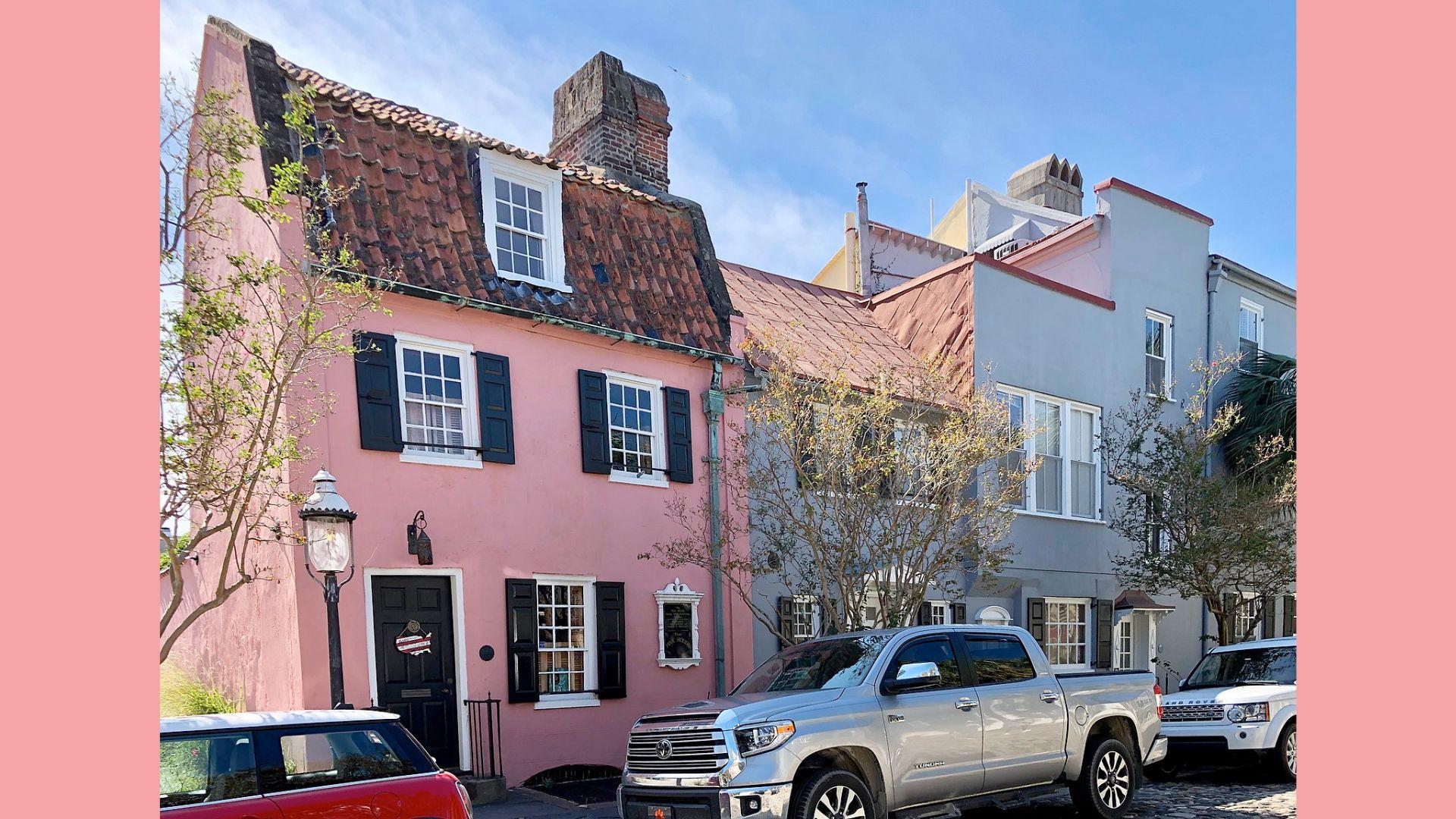
The Pink House, Charleston, South Carolina (Pictured)
With its charming gambrel roof and surrounding cobblestone street, the Pink House in Charleston’s French Quarter offers a taste of French-inspired architecture. Constructed in 1690, it originally served as a tavern (and brothel). Over the centuries, it has functioned as a law office, a private home, and is now an art gallery, featuring one room on each of its three floors. There are rumors that it might revert to a private residence in the future, so visit soon if you can. Even if you miss the interior, the building’s picturesque exterior and historical plaque make it a worthwhile stop.
Mitchell Prehistoric Indian Village, Lake Mitchell, South Dakota
This Native American village, dating back over a millennium, is South Dakota’s only pre-Columbian archaeological site that is open to the public. Visitors can observe active archaeological digs and explore the Boehnen Memorial Museum, which features a reconstruction of a historical lodge from the site. During the winter months, don’t miss the annual Lakota Games on Ice, where the Lakota community showcases traditional games and cultural practices.
Tennessee and Texas
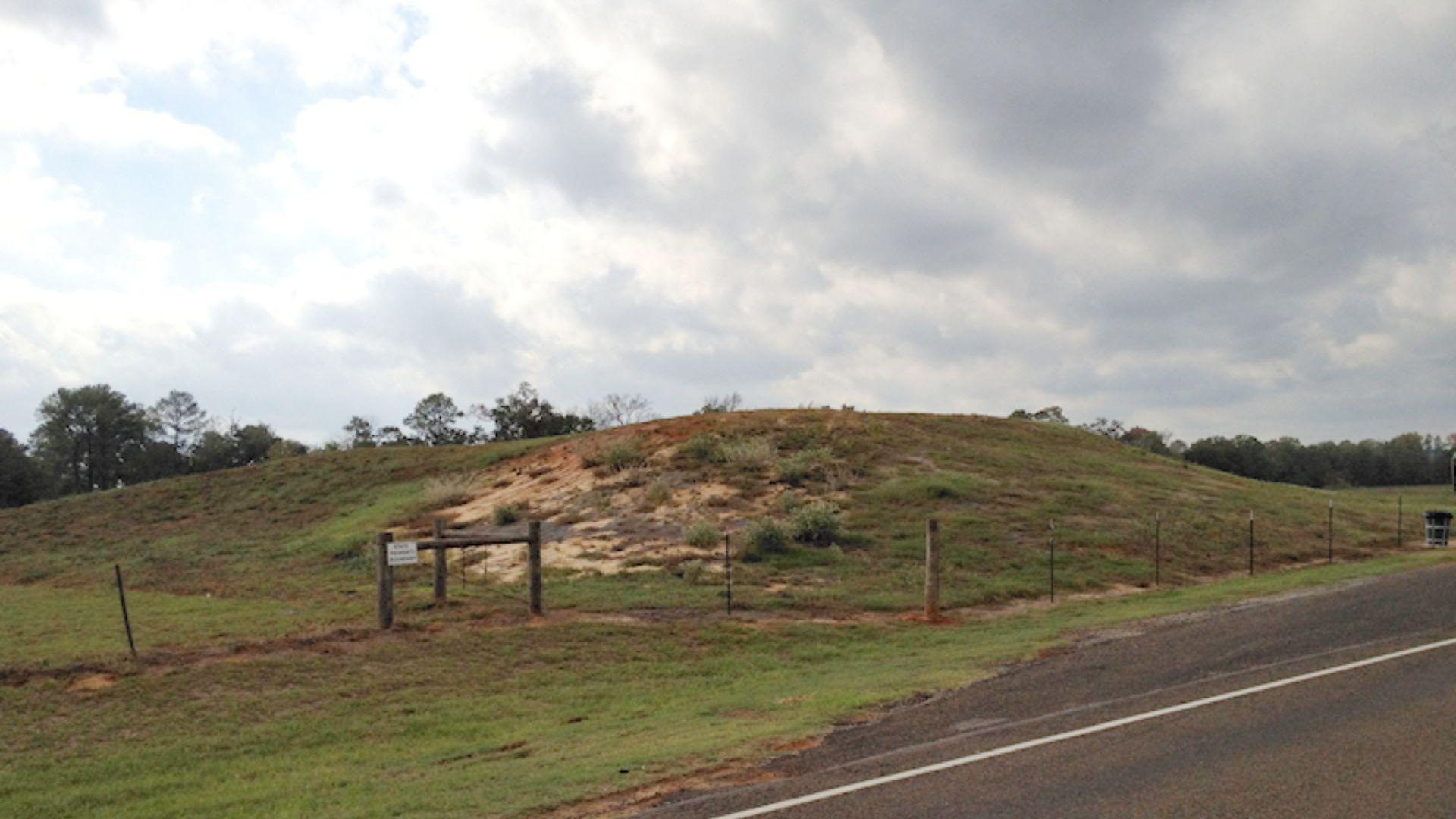
Old Stone Fort, Manchester, Tennessee
You can feel as if you’re stepping back into prehistoric times at the Old Stone Fort State Archaeological Park in Manchester, Coffee County. This site, inhabited since at least 6000 BC, features the Old Stone Fort as its focal point, showcasing remnants of elevated walls on an extensive ancient earthwork. Believed to be a Native American ceremonial enclosure, the structure dates to the Middle Woodland period (100 BC to 500 AD). Be sure to visit the park’s outstanding museum for further insights into this historical site.
Caddo Mounds State Historic Site, Nacogdoches, Texas (Pictured)
Around AD 800, the Caddo people founded a village and ceremonial hub at what is now the Caddo Mounds State Historic Site. They ended up abandoning it by the 13th century. Visitors can immerse themselves in this historic site, which features a walking trail that showcases two temple mounds and a burial mound. You can also explore a reconstructed dwelling similar to those used by the Caddo and delve into exhibits at the visitor center that detail the daily lives of the early Caddo people.
Utah and Vermont
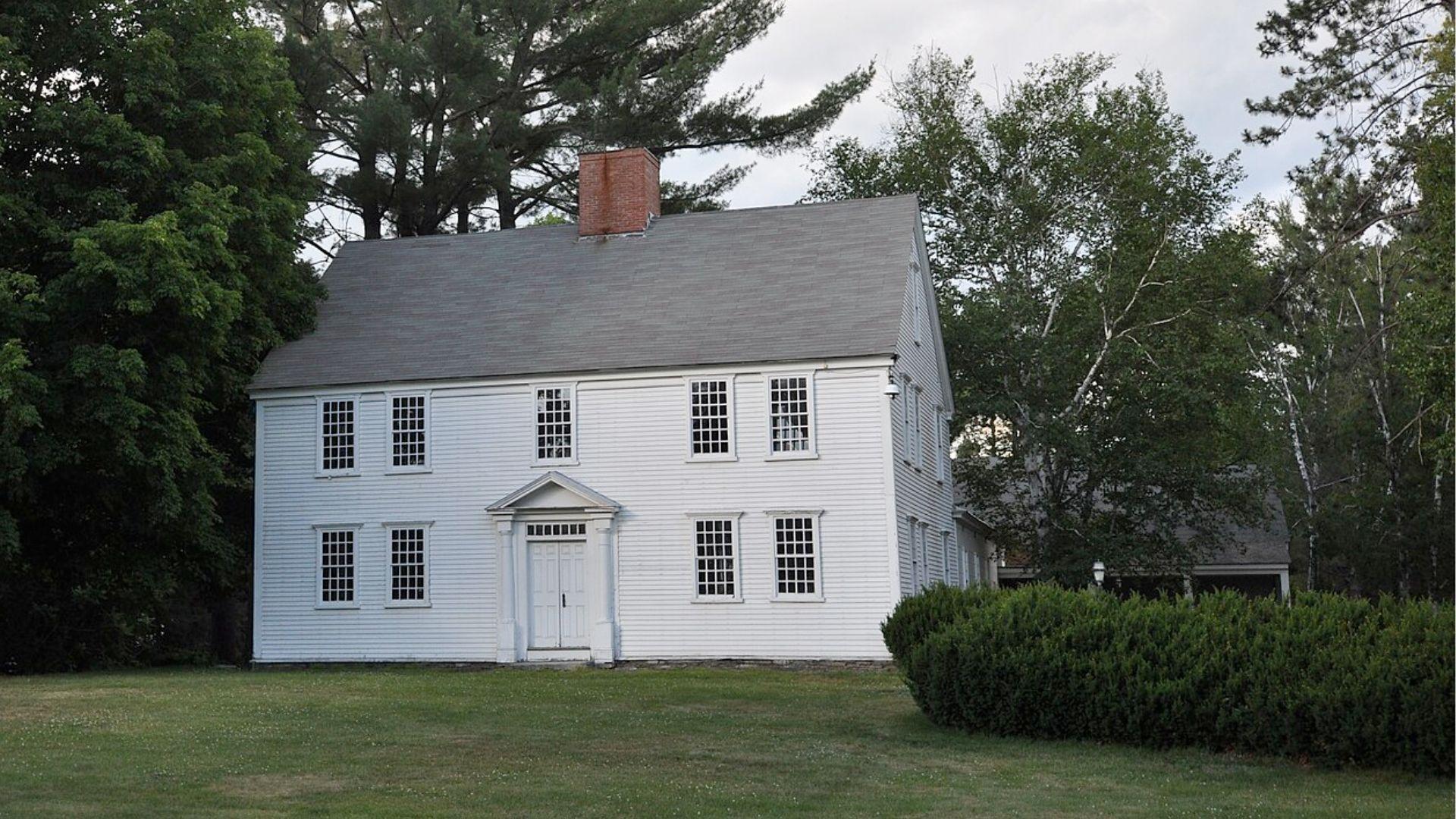
Ancient Puebloan Cliff Dwellings, Utah
The ancient Puebloans are responsible for the numerous cliff dwellings found throughout Utah. At Bears Ears National Monument, you’ll discover the River House Ruin, which dates back to AD 900. This site features well-preserved remnants of two residential structures and a kiva (a ceremonial room used for religious practices). Additionally, the ruins at Cutthroat Castle in Hovenweep National Monument—constructed between 750 and 1300—offer a glimpse into the region’s ancient architecture. Visiting both locations requires a combination of 4WD access and hiking.
Governor Hunt House, Vernon, Vermont (Pictured)
Tree ring analysis identifies the Governor Hunt House as one of Vermont’s oldest buildings. Constructed in 1764 by Jonathan Hunt, who lived there with his bachelor brother, the house saw its first marriage in 1779 when Jonathan wed Lavinia Swan. The home remained in the Hunt family for generations and served various purposes over the years, including as a summer retreat, farmstead, and office. In 2020, it was donated to the Friends of Vernon Center, who aim to transform it into a community center.
Virginia and Washington
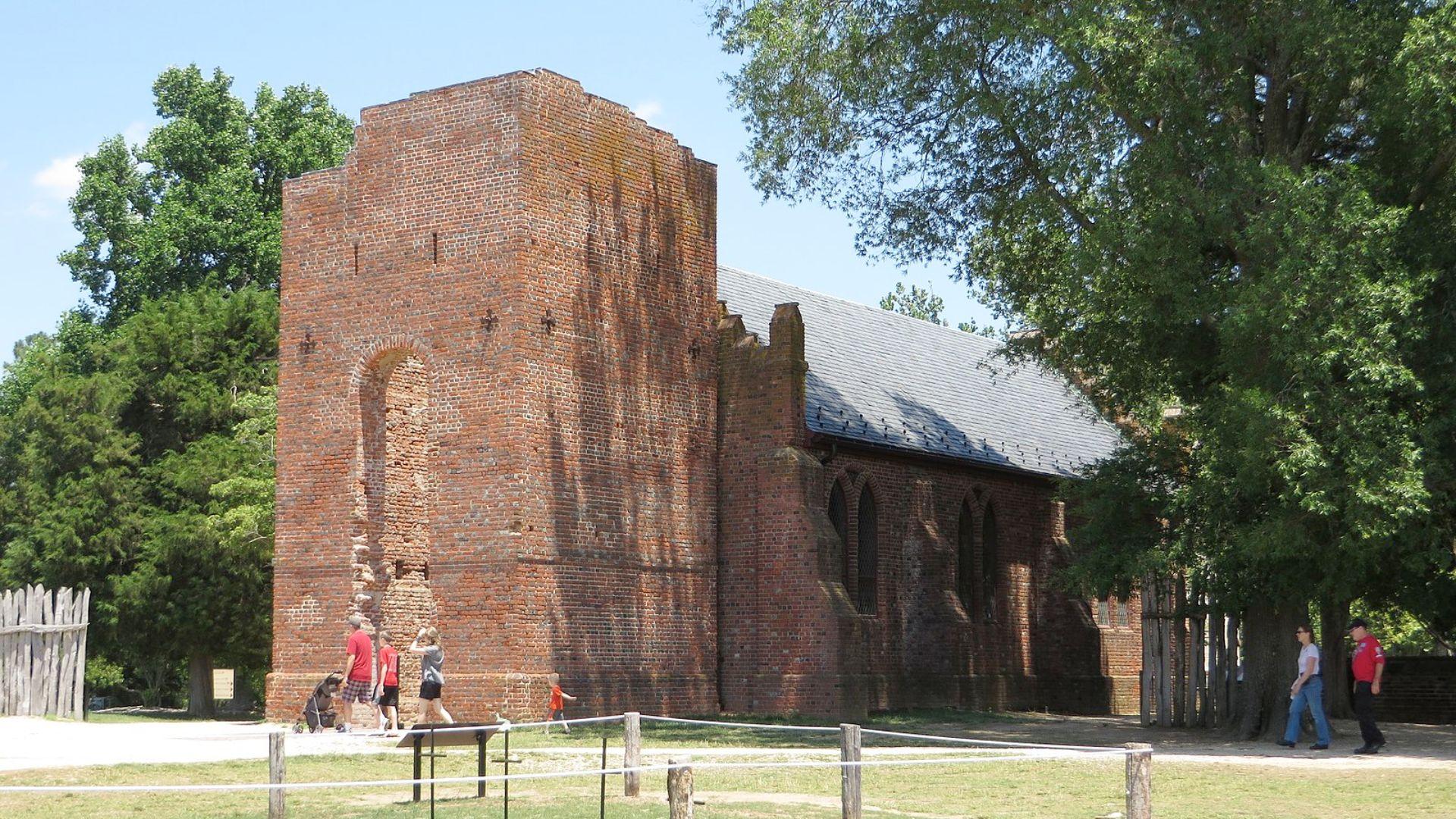
Jamestown Church, Jamestown, Virginia (Pictured)
If you visit Jamestown—the site of America’s first enduring English settlement—you’ll be able to explore several original structures dating back to the early 17th century, including a brick tower erected in 1639. Beneath the tower, you can view the remnants of a 1617 church foundation through glass panels. Virginia also offers significant Native American history, such as Ely Mound—a prehistoric earthwork constructed between 1200 and 1650. Although it may appear unremarkable today, Ely Mound has provided valuable insights into Native American burial customs.
Prince’s Cabin, Walla Walla, Washington
Constructed in 1837 by the Hudson’s Bay Company, Prince’s Cabin is a modest wooden building originally created for a Cayuse leader known as “the Prince.” The cabin eventually changed hands to non-Native owners and was relocated from its initial site to the Frenchtown Historic Site in Walla Walla. Although entry into this preserved 19th-century structure is not permitted, visitors can explore historical markers and interpretive panels surrounding the cabin to learn more about its past.
West Virginia and Wisconsin

Grave Creek Mound, Moundsville, West Virginia
Among West Virginia’s many ancient earthworks, the Grave Creek Mound in Moundsville stands out as particularly remarkable. Constructed around 250 BC by the Adena culture, this massive mound required over 57,000 tons of sand and earth, making it one of the largest of its kind. Visitors can hike a winding path to the mound’s summit. The site is part of the Grave Creek Archaeological Complex, where the museum offers a journey through history, reaching back to the Ice Age.
Tank Cottage, Allouez, Wisconsin (Pictured)
Located within Heritage Hill State Park, Tank Cottage is a notable feature of this open-air museum. Erected in 1776, the house was named after Niels Otto Tank, who acquired it in 1850. The interior boasts authentic Dutch antiques, as detailed by the historical marker on site. Meanwhile, Wisconsin’s Lizard Mound Park offers a scenic mile-long nature trail showcasing an array of Native American earthworks, including conical, linear, bird, panther, and lizard-shaped mounds constructed between 650 and 1200.
Wyoming and Conclusion
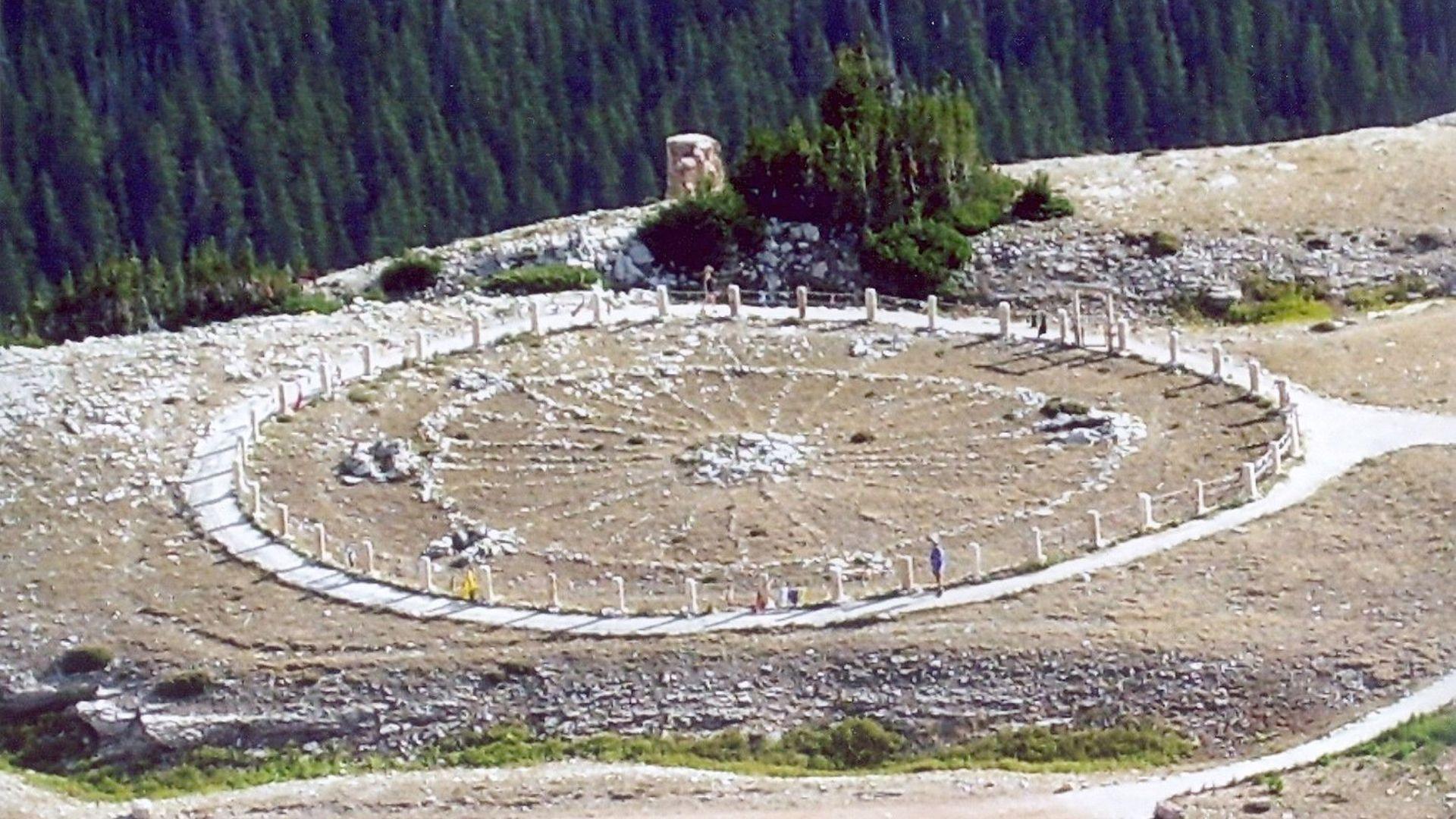
Bighorn Medicine Wheel, Lovell, Wyoming (Pictured)
This mountaintop structure is part of a Native American archaeological site that is up to 7,000 years old. It’s thought that the Bighorn Medicine Wheel was used to predict astronomical events like the summer solstice, although nobody knows for sure. The wheel is protected by a fence, onto which dreamcatchers and prayer cloths are tied. It’s best seen in summer (and from above), when the snow melts away to reveal the limestone rocks organized in a wheel shape with regularly spaced spokes.
If you found this article interesting, make sure to check out the other half of the oldest structures found in the United States in the article “Do You Know the Oldest Man-Made Structure in Your State? – Alabama to Missouri.” America is home to so much fascinating history, so get exploring!

